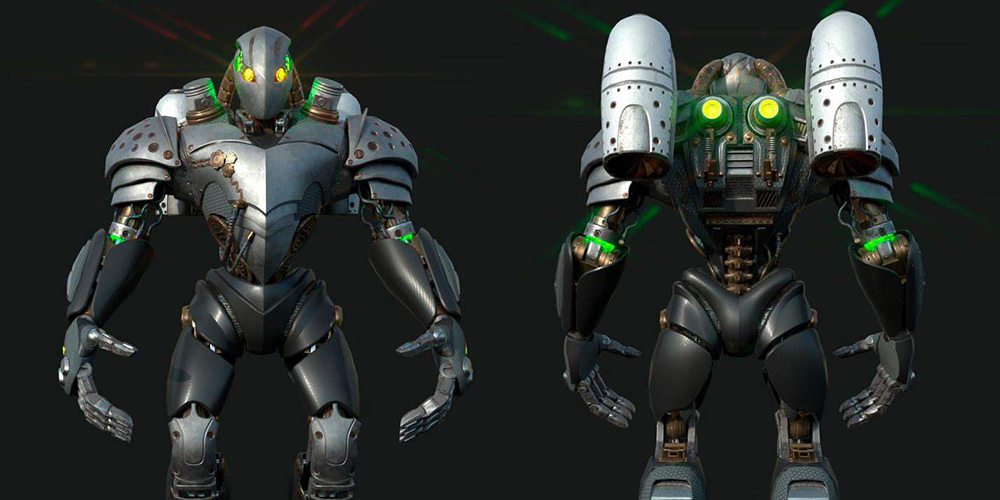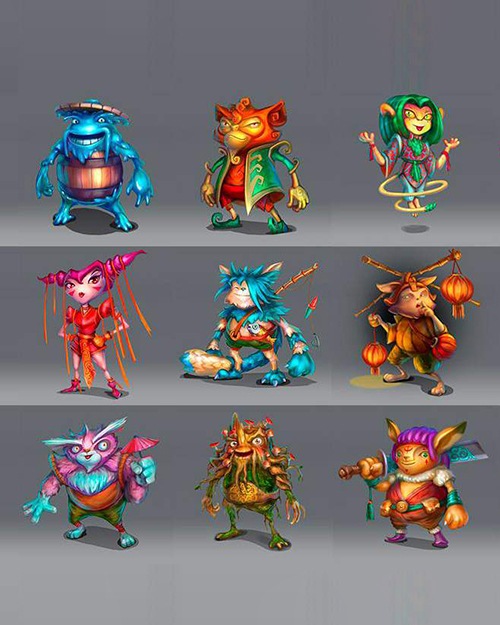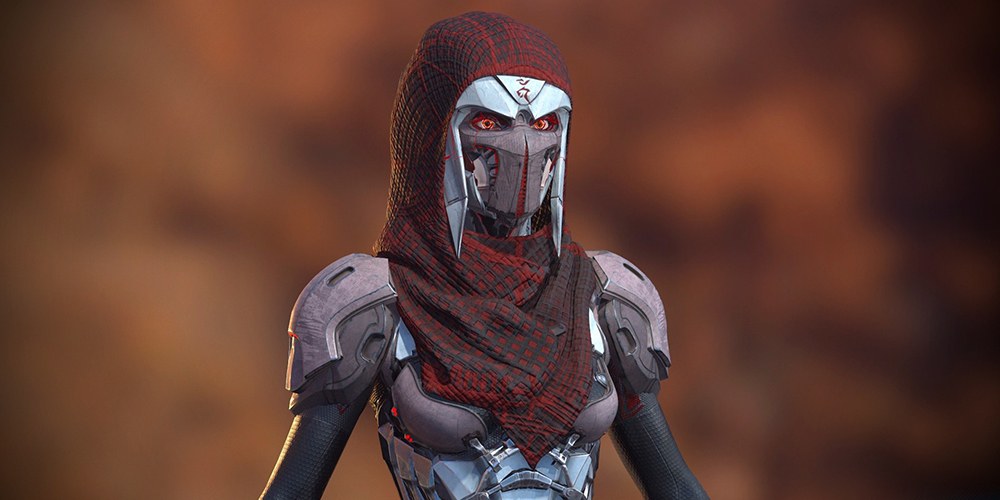Whether you own a game development studio or work on your indie project, the truth remains untouched — a coherent pipeline is a must. So, what makes up the bulk of a well-designed and round video game character?
Be it Mario, Lara Croft, or Pyramid Head, they all share some backstory and evoke unique emotions felt through the plot. Although some iconic heroes like Pac-Man lack these features, backstory, motivation, character arc, and sympathy constitute the backbone of modern character development.
Essentially, the question is whether you’d like your hero to be iconic, merely organic within your game environment, or commercially successful. Well, some of them may combine all of these elements.
No matter whether you’re seeking 3D modeling services or want to build game characters from scratch on your own, the formula we’re about to share is universal. So, fasten your seat belts and get ready for a bunch of helpful tips!
What Is the Best Way to Make Game Characters?

Astonishingly enough, the recipe of how to create a video game character capable of winning the loyalty of all players is pretty straightforward. Even though the industry has got the know-how to approach character design from multiple angles, studio artists usually begin with research. Sounds too scholarly?
Alright, let’s rephrase and mention that this stage implies looking for references and drawing sketches. Yet this scenario mostly relates to concept artists at AAA studios or indie game designers on a low budget. The former have separate experts to make characters vivid, whereas the latter usually lack time and money to afford this.
The statistics in Japan as of 2020 indicate that the most recognized video game characters include those from Pokémon (86%), Super Mario Bros. (86%), and Dragon Quest (69%). Still, why is it necessary to refer to Japanese game production? Merely because local studios have managed to develop such world-known characters as aforementioned Mario and Link, Sonic, Chris Redfield, Leon Kennedy, and the rest. All of them continue to bring profit to their alma mater studios even after decades of creation.
Experts armed with hardened experience start from brainstorming ideas and imagining a character within their game setting. It’s no use looking for references if you’ve got no clue about the lore, plot, genre, and game environment. In a nutshell, prominent character designers abide by ubiquitous rules in the following plan:
- Researching and brainstorming concepts;
- Making up a powerful backstory and motivation;
- Drawing sketches and adding visual highlights;
- Elaborating on vivid traits;
- Combining all together in a holistic character.
In this article, we’ll break down the entire structure of working on video game characters into conceptual and technical pipelines. Read on to learn more!
Conceptual Pipeline: A Recipe of Creating Game Characters that Matter

When it comes to custom character creation, the conceptual pipeline should be your first best friend. Before diving into the technical part, it’s essential to prepare the foundation encompassing a powerful background storyline, exclusive behavioral characteristics, and other details that make your character stand out.
Let’s take, for instance, Link from The Legend of Zelda, a character who remains archetypal for decades. Let alone that he perfectly fits into The Kingdom of Hyrule and has been helping Nintendo reap the commercial harvest since 1986. Equipped with strong motivation originating from his past, Link is visually appealing and well-animated. Now let’s peep into the backstage of video game character design!
1. No Sketchbooks — Only Ideas and Research
Start with brainstorming ideas about who your character is, their role in the game, primary traits, and the setting where they function. Is your character a cunning trickster or a hero who saves the princess after slaying the dragon? Most often, classic archetypes from tales and legends fit into any story, so don’t shun time-proven images.
Surf the net for references on Artstation or other platforms to catch the gist of what you’re after. Don’t be afraid to borrow some ideas but add a special touch that reflects your own vision. Art has always been about dismantling some masterpieces from the past into smaller chunks, mixing them in an unexpected order, and throwing in your unsurpassed style.
2. Wrap Your Character with a Good Old Backstory
Still no sketchbooks. Only your mind, either digital or tangible paper to lay out ideas, and the all-mighty internet. It’s time to provide your precious character with a backstory that’s easy to believe in.
Maybe you’ll even want to get familiar with Campbell’s monomyth theory to learn how fairytales, legends, and myths share a single structure that drives the entire narrative.
A well-written backstory mixed with a good character arc allows the player to foreshadow what awaits their avatar inside the game long before the plot’s climax. A coherent background intensifies the gameplay, enabling players to derive stronger emotions from what’s happening in the actual story.
3. Sprinkle the Initial Design with Detail
Now it’s finally time to move to sketching and adding detail to your original design. A quick tip here is to make sure that a character’s silhouette itself already hints at their overall style, occupation, backstory, and the like.
Is he or she a gunslinger fond of fishing? Or maybe they’re a scientist going nuts after a series of unsuccessful experiments? Chances are you even ponder over making your character human-like, animal-like, or a mutant?
Another trick at this stage involves checking whether your character is recognizable at a certain distance as well as easily discernible against the game environment. Just play with proportions, perspective, colors, and detail!
4. Come Up with Vibrant Character Traits
A detailed sketch is done? Then proceed to pick up exclusive character features that define their behavioral habits. This stage is no longer about appearance. Illustrative traits create an impression of vividness, making a character well-rounded. Merely don’t repeat the mistake of Valorant whose character design proves vague and devoid of distinctiveness.
5. Polish and Fit the Design into Your Game Environment
Once your 2D model, backstory, and feature list are complete, it’s time to ensure that your work resonates with the game setting. The aim of this stage lies in polishing your character and matching their design with the game environment. If your final product is a 2D game, just go for rigging and animating. Try out Autodesk Sketchbook or Synfig Studio. If your choice is 3D, quickly jump to the next section!
3D Tech Pipeline: The Art of Breathing Digital Life into Concepts

In contrast to the conceptual pipeline, the tech one requires more experience as well as the knowledge of 3D model components. Nevertheless, if all is set up, let’s get to the point. According to Allied Market Research, the international market size of 3D rendering and visualization software was estimated at almost $1.5bn in 2019, forecast to hit about $8bn by 2027. An intriguing prediction, isn’t it?
1. Sculpting or Modeling, Working with Retopology and UV Mapping
3D artists have two initial options once they receive a 2D concept art. The first is to open Zbrush or its alternative and start sculpting. In turn, the second implies modeling a future character with polygons in Autodesk Maya, 3ds Max, Blender, or other similar software. Retopology helps optimize the number of polygons, which is essential for ensuring that your model is seamless and ready for UV mapping. Afterward, progress to UV unwrapping and baking. These procedures enable artists to paint 2D textures on a 3D model that has polygons.
2. Texturing, Rigging, and Animating
During this phase, 3D artists apply either a Photoshop texture on a mesh or use software like Substance 3D Painter for more in-depth and professional work. Usually, the latter approach is more common among AAA studios.
The texturing stage is followed by rigging, which means throwing in joints and creating a general skeleton to ensure smooth bends when your character is moving.
Ultimately, character animation can be performed in Maya, Blender, or directly in Unity. In addition, you can use either manual animation techniques or refer to motion capture suits, depending on the budget.
3. Integrating a Complete Model to a Game Engine
When your video game character is equipped with everything from the artistic and technical perspectives, the final stage ends up in a game engine like Unity, Unreal, Godot, or some custom one. Often, this process takes much time because an engine may lose track of materials used for texturing, or you’ll face other importing-related bugs.
Nonetheless, to make your character fully alive, it’s a separate scenario related to coding and scripting inside a game engine. If you’d like full-cycle game development executed in-house, you’ll need to find a tech artist with profound expertise. Sometimes outsourcing some aspects of character or game development proves a more worthy venture.
Video Game Character Creator vs. Development from Scratch
While indie games that use external third-party assets are ironically called “asset flippers,” it’s becoming more widespread to use video game character generators. Instead of following through all the steps of old-school manual character development, large studios and indie game designers more often refer to Unreal Engine 5’s Metahuman. As an advanced character creator, this software allows you to build photorealistic humanoid 3D models that are rigged and ready to be imported to Unreal Engine.
However, what this approach lacks is that such characters are deprived of unique details and stylized elements coming out of an artist’s brush. Automated creators are certainly not your choice if you’re about to build a game with exceptional characters in unusual environments. Keep that in mind.
You may also want to search for game art outsourcing companies that will do the entire work better than automated software.
How to Design Game Characters and Expect Commercial Success?
Irrespective of your game design needs and expectations, you’ll probably want your character to become recognizable or even commercially successful, right? If so, you might want to optimize your resources and even hire a team of professionals guided by your concept art or develop everything from scratch.
3D-Ace is here to give wings to your most ambitious goals, no matter whether you’re looking for full-cycle model creation or intend to outsource only particular aspects of your game assets. We’re also ready to provide you with specialists managed by your in-house experts. Don’t be in two minds and contact us to discuss your project in detail!










